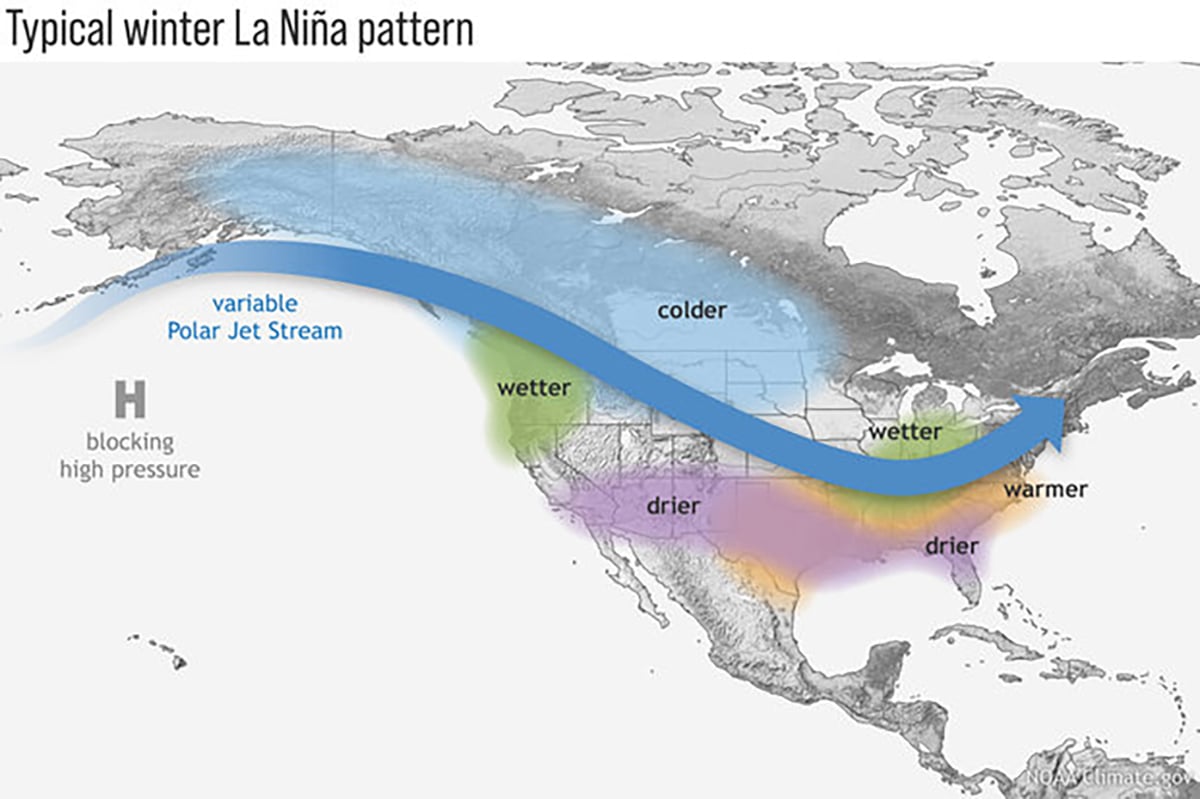The general manager of one of North America’s largest organic certifiers makes the case for switching to organic ag
GUELPH, Ont. — Record prices for organic grain and oilseeds could stick around for another five years, says an organic agriculture leader from Saskatchewan.
Organic commodities hit unheard of highs in the last 24 months, with flax topping $35 per bushel and milling wheat exceeding $25 a bu. in Western Canada.
Wally Hamm, general manager of Pro-Cert Organic, one of the largest organic certifiers in North America, said supply cannot keep up with U.S. demand for organic grains, which means record premiums above conventional grains are here to stay.
Read Also

Weather factors to watch this winter
There are currently three main factors that could be a driving force behind the type of weather we may see this winter. The first is La Nina, which is currently in a weak stage.
“I would say from my experience with (the) data and my experience in Western Canada, the way the supply and demand situation is today … you’ve got at least five years where the prices are going to be very significantly different,” Hamm told the Guelph Organic conference, which was held at the University of Guelph, Ont., Jan. 29-31.
Hamm delivered a detailed sales pitch at the event, laying out the economic reasons to convert to organic production. As part of his presentation, Hamm compared the profitability of a corn, soybeans and winter wheat rotation in Ontario for conventional and organic farmers:
Conventional producers in Eastern Canada should expect an average cost of $367 per acre and gross returns of $557 per acre, for an annual net of $190 per acre.
Organic producers in Eastern Canada should average an annual cost of $336 per acre, gross returns of $932 and an annual net income of $596 per acre.
“Organic grain farmers in Eastern Canada currently spend about the same and net three times as much per acre as their conventional neighbour,” Hamm said.
According to U.S. Department of Agriculture statistics, organic prices as of Jan. 17 were:
- Feed corn: $12.40 per bu.
- Feed grade soybeans: $25.73 per bu.
- Food grade hard red spring wheat: $23
- Barley: $9.88 per bu.
Hamm said the prices are two, three or four times higher than conventional grain. With demand for organic food growing at more than 10 percent a year in the United States, it will be difficult for organic grain production to catch up because organic farmers are getting older, just like all producers, Hamm said.
“At Pro-Cert we have a little bit of a database. We have 10 percent attrition, per year, of our clients. That means they’ve retired or the farm goes out of organic for some reason,” he said.
“If you have 10 percent demand growth and 10 percent attrition, you actually have 20 percent opportunity (for growth)…. I stand behind this. You could add a lot of (organic) farms in Ontario without really shifting this (price) paradigm.”
Hugh Martin, former organic crop production specialist with Ontario’s agriculture ministry, said organic grain prices could drop slightly, but they’re unlikely to fall off a cliff.
“We can’t predict what the prices are going to be a couple years down the road,” said Martin, who collaborated with Hamm on the cost and profit estimates for Ontario grain production.
“The prices right now are at an all time high so I think I’d be foolish to say I guarantee they’re going to stay there. I suspect they’ll soften a little bit.”
Martin said organic imports are unlikely to weaken prices because North American processors and food manufacturers want to buy U.S. and Canadian grain.
“The buyers in North America, they have a loyalty factor to local. There’s less of a hassle to local,” he said.
“They’ll bring a few containers from China or India or whatever, but there’s always a little bit of distrust to some of those systems.”
Roger Rivest, an organic farmer and grain marketer in Tilbury, Ont., said prices triple to conventional grain could become the norm.
Still, like all free markets, buyers turn elsewhere when prices get completely out of whack.
A few years ago, Rivest bought organic wheat from Western Canada at $8 a bu.
“Now I phone them up and offer them $28,” he said, adding that farmers often counter offer requesting more.
“The market is at a point where it’s going to buck that.”
Instead of paying excessive premiums, he’s turning to India and Ukraine for organic corn, soybeans and wheat.
“It’s going to put a ceiling on the price. (Imports) have already brought the price of feed beans down from $30 (per bu.) to $24.”
robert.arnason@producer.com















